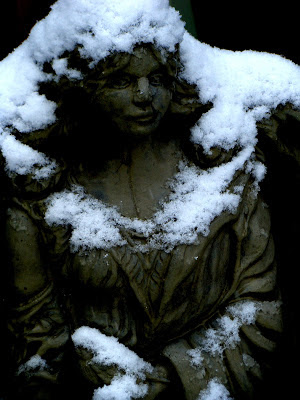I have places where all my stories begin.
That is the first line of an essay entitled "Knowing Our Place" written by Barbara
Kingsolver. The essay is taken from a
compilation written by various Southern women – a book called All Out of
Faith edited by Wendy Reed and Jennifer Horne. I want to be sure that my works cited is out of the way,
because if there has ever been one ounce of plagiarism in my heart, it is for
this sentence.
I have places where all my stories begin.
I do have places where all my stories begin. I have such an appreciative sense of place
when it comes to telling stories; I just want to soak it all in. As a young child, my first impressions of
place were always linked to permanence.
My grandparents’ home, my parents’ home, all of my aunts and uncles and
neighbors’ homes – these places represented permanence to me. Everyone
I knew lived in the same houses and owned the same land until they died, so
much so that the houses were actually named for their owners.
But for me, finding that permanent place has been more like
the children's tale of Goldilocks and the three bears.
I first thought about how I identify with that story when I read an
article in Cottage Living April 2008. The article was focused on a trend called 'pocket
neighborhoods' and one of the architects – Ross Chapin – made this statement
about finding 'the sweet spot' of home design: When it’s just right, there is a resonance. It’s what Goldilocks was searching for.
So…I decided to read the original children’s story again. As
I perused various internet articles, I learned that the original nursery tale
dates back to the early 1800’s. In the
earliest version, the intruder was a she-fox, who was later replaced by a
hag-like woman. Over the years, the
silver hair of the ugly old woman was transferred to a younger protagonist, and
finally changed to golden hair – thus, Goldilocks. While versions vary, we do know that
Goldilocks was in search of the comforts of home and these comforts had to be
just right.
On a literary level, the story uses the rule of three. In his book, The Seven Basic Plots: Why We
Tell Stories, author Christopher Booker calls it the "dialectical three...where the first is wrong in one way, the second in another or opposite way,
and only in the third, in the middle, is just right. This idea that the way forward lies in
finding an exact middle path between opposites is of extraordinary importance
in storytelling."
Unlike most fairy tales, the uniqueness of this story is
that it offers no resolution. Goldilocks
runs back into the forest (the wild place) and never returns to the bears’
house (the civilized place) again, which is an ironic contradiction in itself. No matter the outcome, we still have a place where the story begins.
My own search for just right has led me to homes that
were too big, too small, too hot, too cold, too old, and too new.
And yet, I found something just right in every single place; I found story.
To date, we have yet to find that just right perfect ending, but we have
found places where all our stories begin.
Some of today’s big stories are so simple, but when they are examined years
later for their hidden lessons, they are profound.
Back to the beginning…In her essay, Barbara Kingsolver
writes the following: Whether we are
leaving it or coming into it, it’s here that matters, it is place. Whether we understand where we are or don’t,
that is the story: To be here or not to be.
In the earlier version of The Three Bears, the old woman took three actions: She looked in at the window, then she peeped
in at the keyhole, and seeing nobody at home, she lifted the latch. At that
point, I’m in for the rest of the story, no matter where it leads or how it
ends. Once I am here (place), I have to be
here (story). If the process is too
hard, too soft or just right…it’s all part of knowing my place.
When I was little girl and my grandma read me stories, I
never closed my eyes or fell asleep; I didn’t want to miss a single thing. I would ask her to read the same story over
and over again, but I never understood why. Now, I do. At some point during the narrative, I knew
the story so well that I lifted the latch.
No more looking in or peeping in, I walked inside the place where the
story began.
Sometimes, I think we are so busy trying to find the place
that is just right that we live outside our own stories as they are being
told. We may catch an occasional glimpse
or peep into the narrative of who we are, but we never know the place where our
stories begin.
Thank you, Ms. Kingsolver, for your fourteen published books,
and for one completely coveted first line that's just right.























